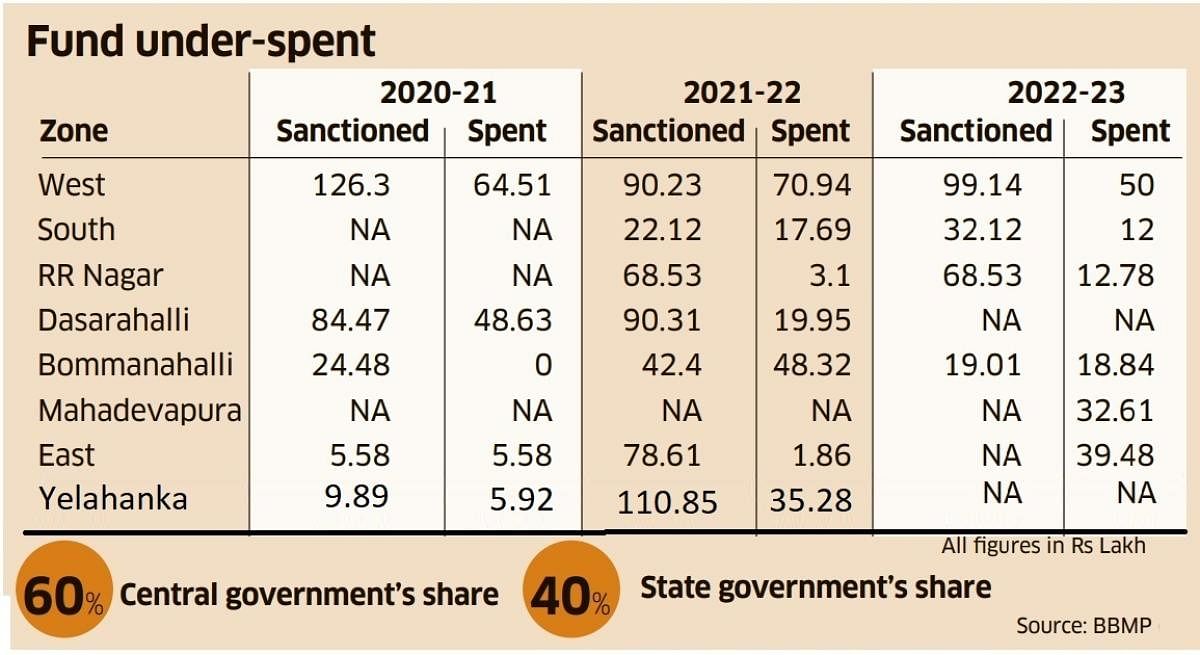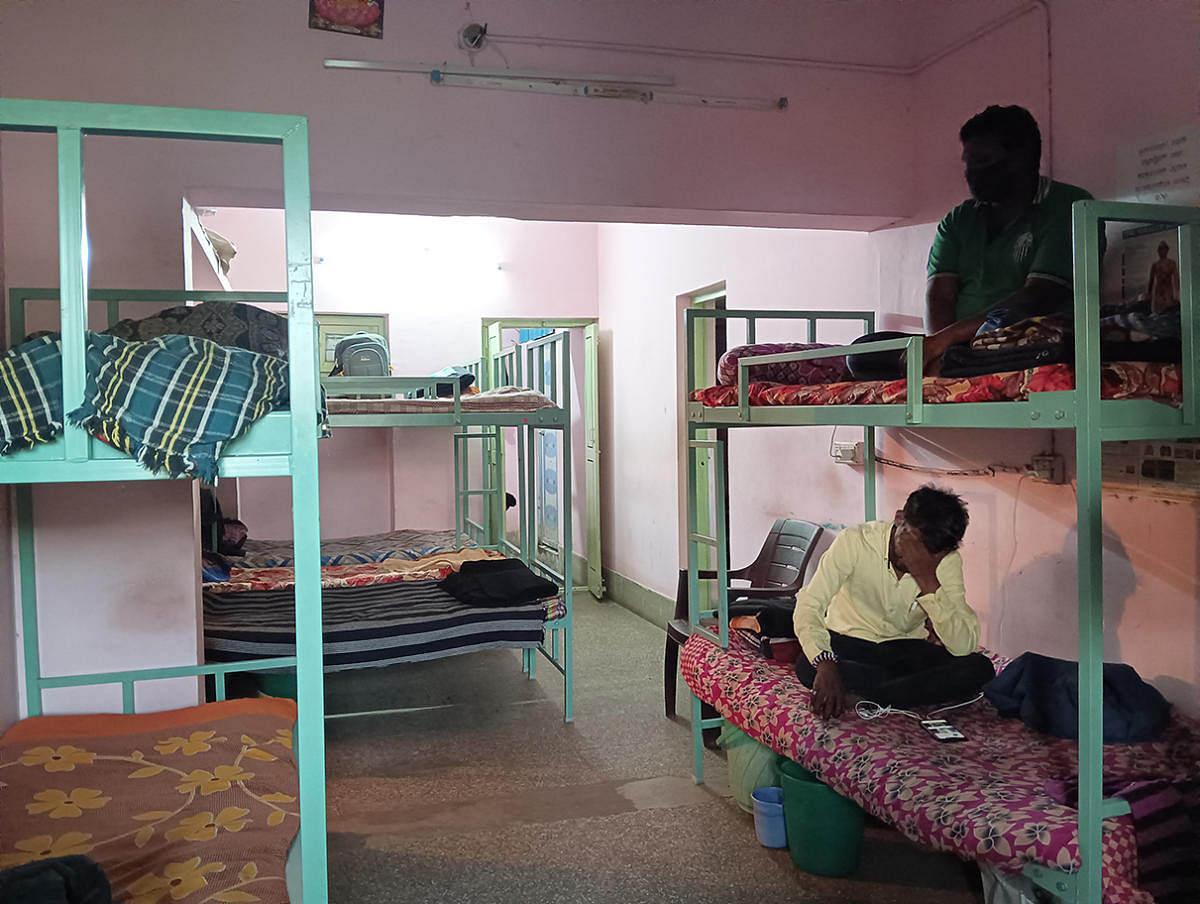
A musician from Chamarajpet who left home due to a property dispute, a BCom graduate from Andhra Pradesh who lost his call centre job in Bengaluru, youths from Bellary and Raichur who left behind lands and families to make their living in Bengaluru, a youth from Arasikere who lost his family owing to Covid and moved to Bengaluru, a youth from Kanhangad who came to Bengaluru to upskill himself…
All these people have found their home in Namma Mane, the shelter for the urban homeless in Upparpet in Bengaluru. Run by Bruhat Bengaluru Mahanagara Palike (BBMP) under Deena Dayal Anthyodaya Yojana - National Urban Livelihood Mission (DAY-NULM), officially there are 48 such shelters functional in Bengaluru, that can host 1,477 people.
Sources say that the occupancy of night shelters is at 75%. The staff of the NGOs that run shelters say they survey the places where people sleep on the streets, counsel them and admit them.
“Those who are physically fit take up odd jobs such as catering, daily labour, painting, plastering, loading jobs in the market etc. which give them quick money without any need for documents for employment,” says Raghavendra, in charge of a shelter home in the city centre. Some even work as inconsequential side actors in films, supplied by agencies to the filmmakers for a daily wage.
As per NULM guidelines, 30% of the shelters should be recovery shelters meant for old, infirm, women, who should be treated with extreme sensitivity. “NULM guidelines say that elderly persons and transgenders should be given separate shelters, but this is not followed,” says Ram Sampath, co-ordinator of Impact India Consortium.
Out of 48, only five shelters are meant for women. Even when women are seen sleeping on the streets, these women’s shelters are not full. For example, a shelter with a capacity of 20 in Yeshwanthpur has 13 inmates.
BBMP uses its own buildings or rents private buildings to run the shelters. “Existing shelters are not disabled-friendly at all. There is neither ramp access nor disabled-friendly toilets or facilities,” Sampath adds.
Mental health a major issue
Shelter managers say rescued homeless physically or mentally ill people are admitted to various private, charitable and government hospitals.
“NGOs are dependent on Nimhans and other organisations for the treatment of the mentally ill. The government must consider separate shelter homes for the mentally ill, people with disability and addicts,” says Ram Sampath.
The shelter homes outside the city centres in zones other than East, West and South are not always full. Ram Sampath says the elderly and infirm who cannot work can be relocated to these centres in order to house the able-bodied homeless crowd in the city centre where odd jobs are more.
The BBMP rules say that the homeless rescued in one zone should be rehabilitated in the same zone. This makes such relocation impossible, he says, adding that the night shelter system should be centralised and not zone-based, to help such movements.
Other problems
A work order for running a shelter home stipulates that there should be three caretakers and one manager in each shelter. They should be paid as per the minimum wage mandate of the state government.
Clean water, electricity, toilets, toiletries, medicines, hospital visit expenses, and hygiene supplies for the shelter should be supplied by the organisation that runs the shelter.
However, some of the shelter homes DH visited did not have first aid boxes, while some had two toilets for 40 inmates. Many were made of galvanised iron sheets, above existing BBMP facilities. anyone can guess the plight of inmates of such shelters during summer.
“Earlier, each shelter used to get Rs 5-6 lakh. Now each shelter in Bengaluru Urban can be allocated Rs 8-9 lakh. Still, the policy is to award the tender to the lowest bidder,” says T V Narasimhappa, a member of the Supreme Court-appointed Independent Impartial Committee (IIC) that monitors the implementation of policies for the urban homeless in Karnataka.
He explains how this policy can be a problem. “The salary itself will cross Rs 3-4 lakhs. How can the shelters provide all other basic entitlements with the rest of the money? The inmates are entitled to facilities of health, food, transport, ration card etc. With the lowest bid, the shelters cannot be run properly,” he says.
Need for transparency
The work order mandates the provision of one-time food to 5% of the homeless during the night. The operational guidelines by NULM say that 10% of old/infirm inmates who cannot pay must be given food. The guideline talks about subsidised food for all inmates.
The manager of a shelter home in Upparapet told DH that those who do not earn enough to feed themselves are given food from the shelter kitchens. However, a few inmates spoke of going to bed on an empty stomach when they did not have work or money.
Guidelines say that the NGO should run camps to give documents and undertake upskilling efforts. Health camps, educating the children of the homeless, providing government facilities to people with disability etc are other mandates.
How much of these are followed is a question. “The details of operation and maintenance, shelter details, photographs, bills, records, policy recommendations, meeting minutes etc should be uploaded on the Saviour app, but not all details are available on this app,” says Narasimhappa.
Sources say the review meetings of various overseeing committees are not being held on time. Data sourced from BBMP shows that money allocated to various zones is not being spent fully, and shelters are not fully occupied.
